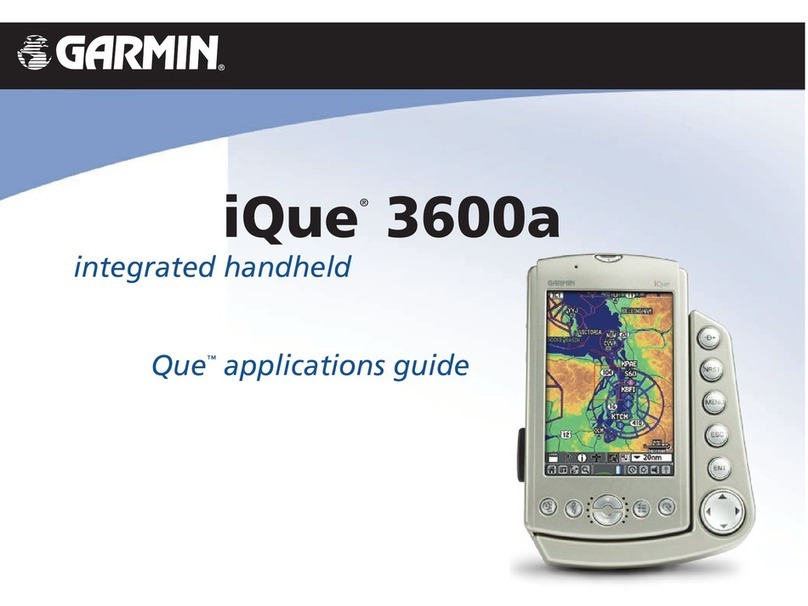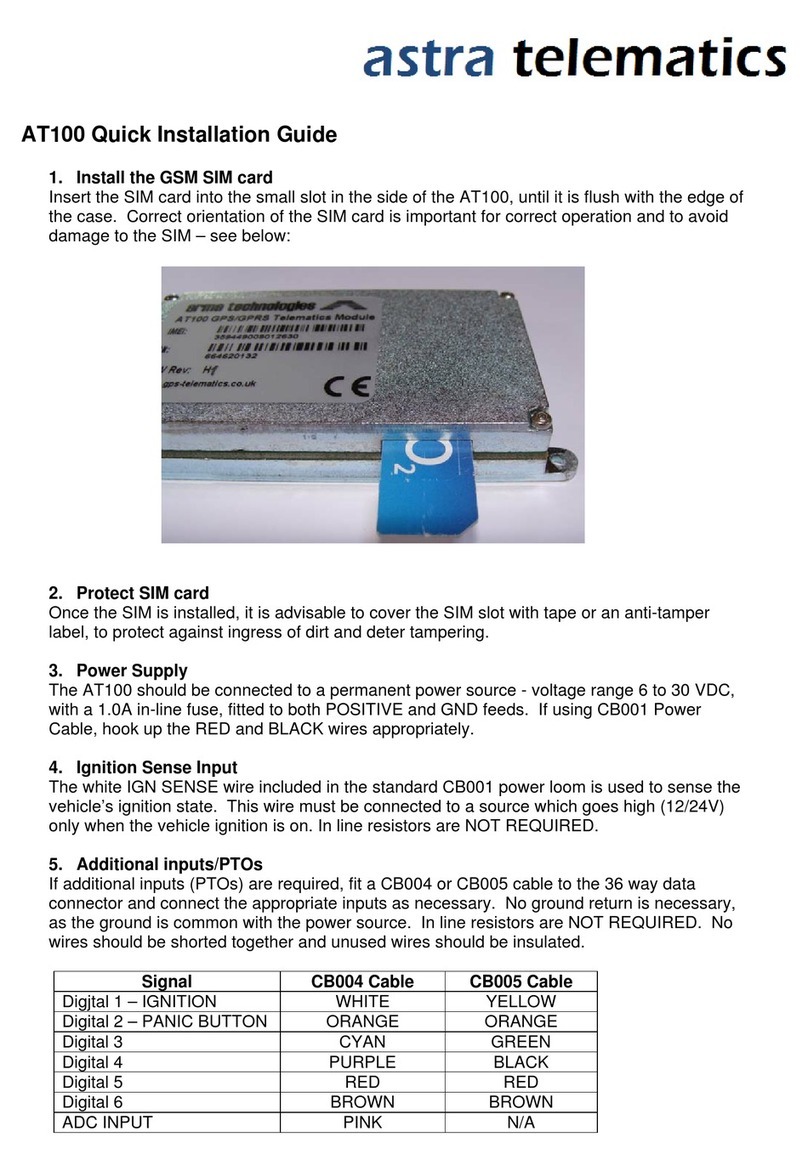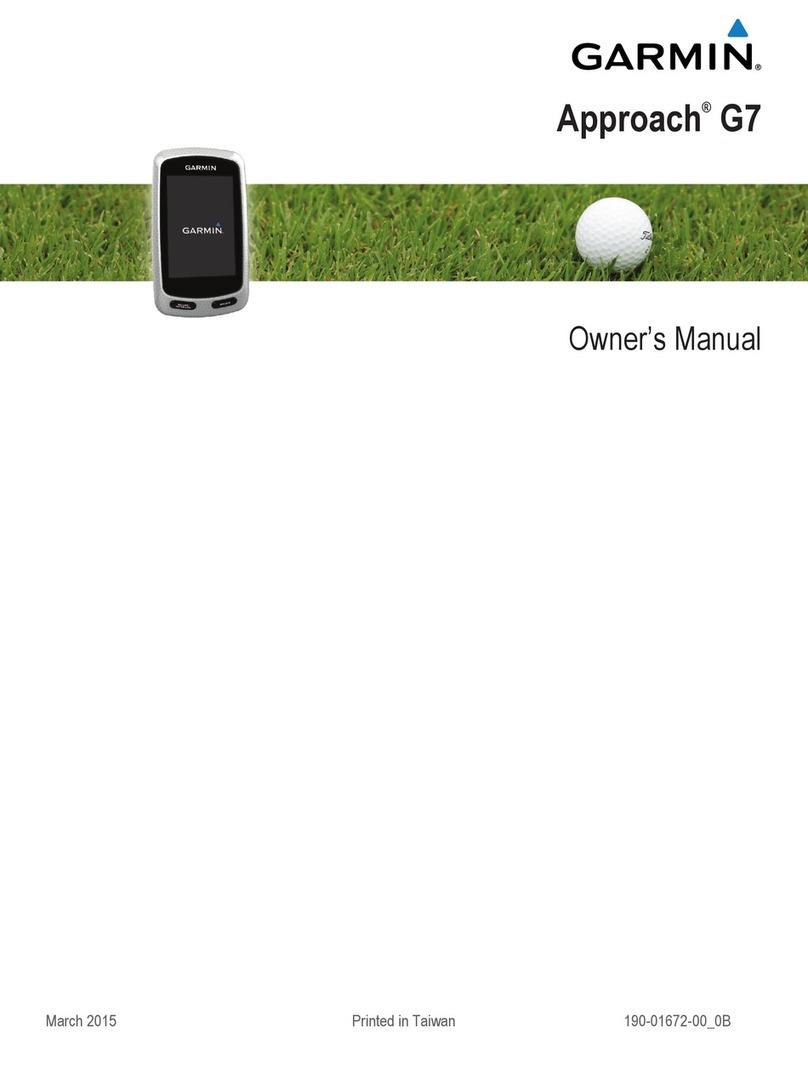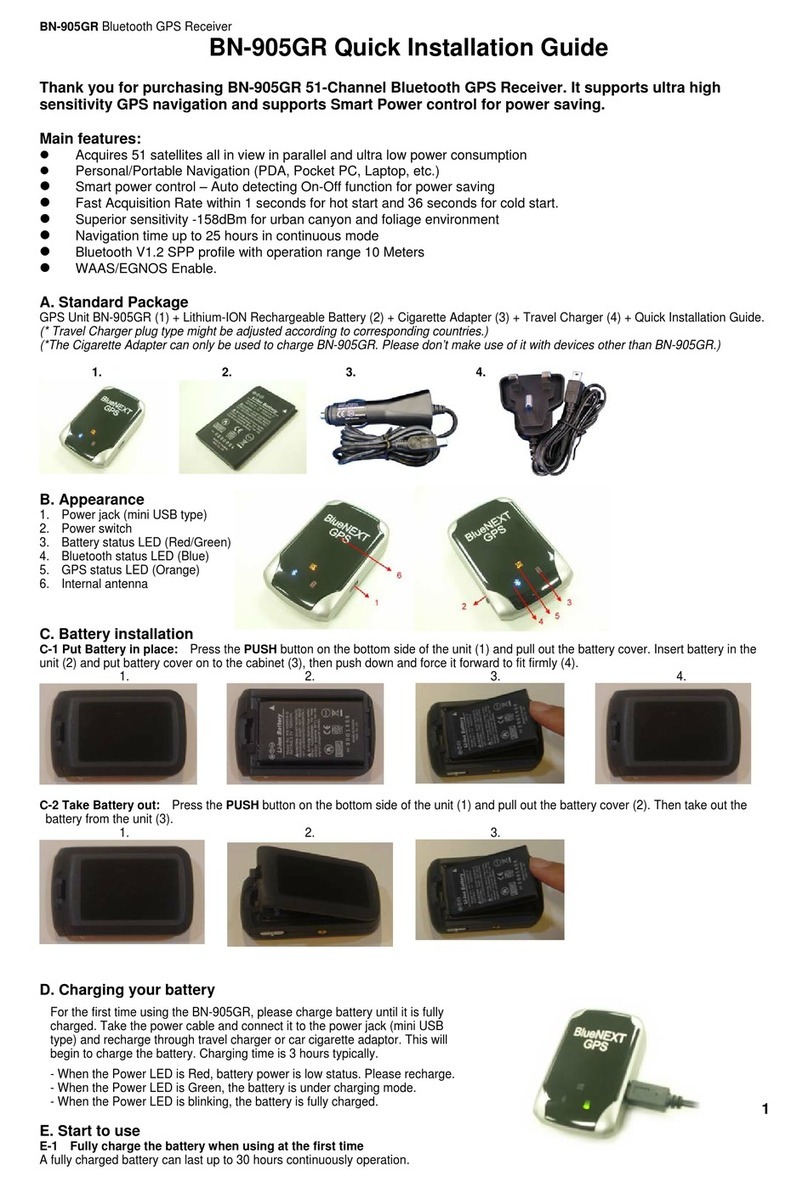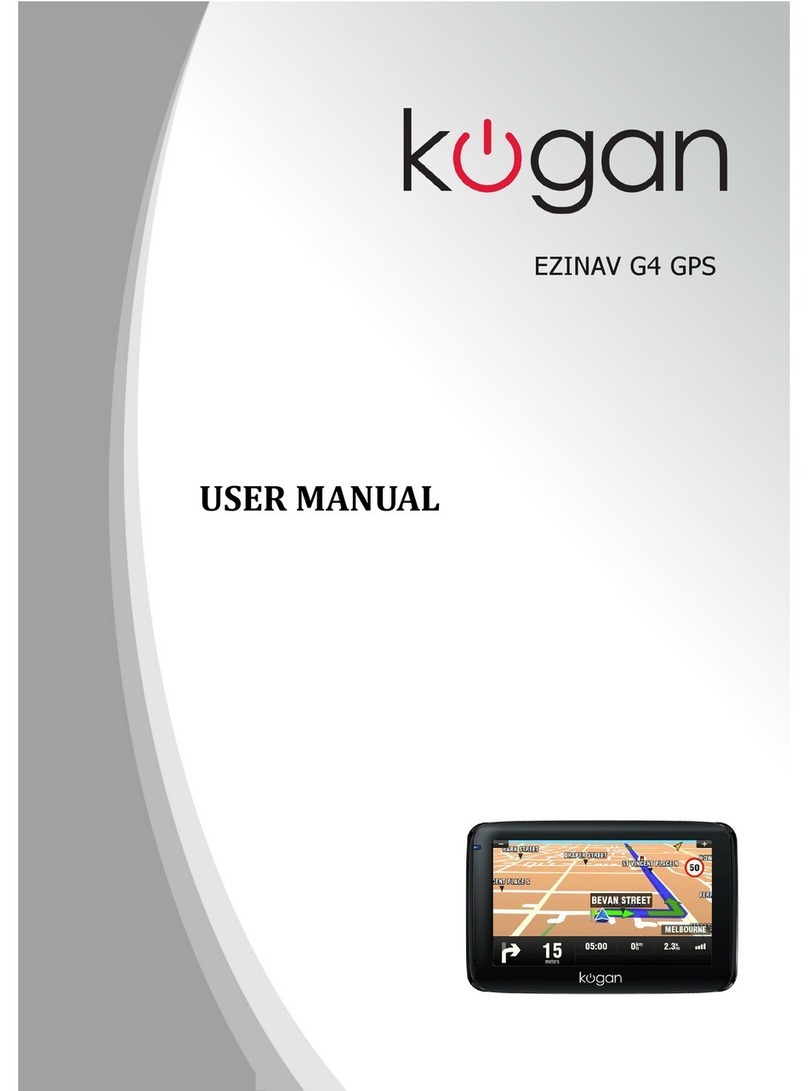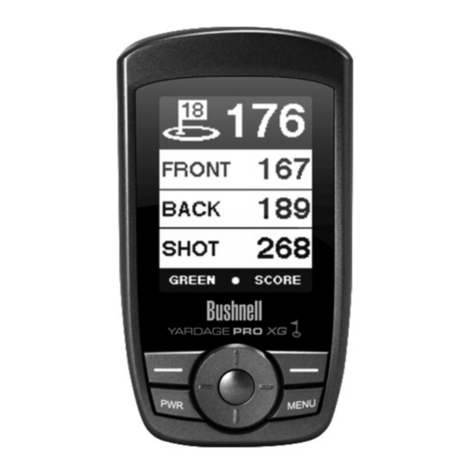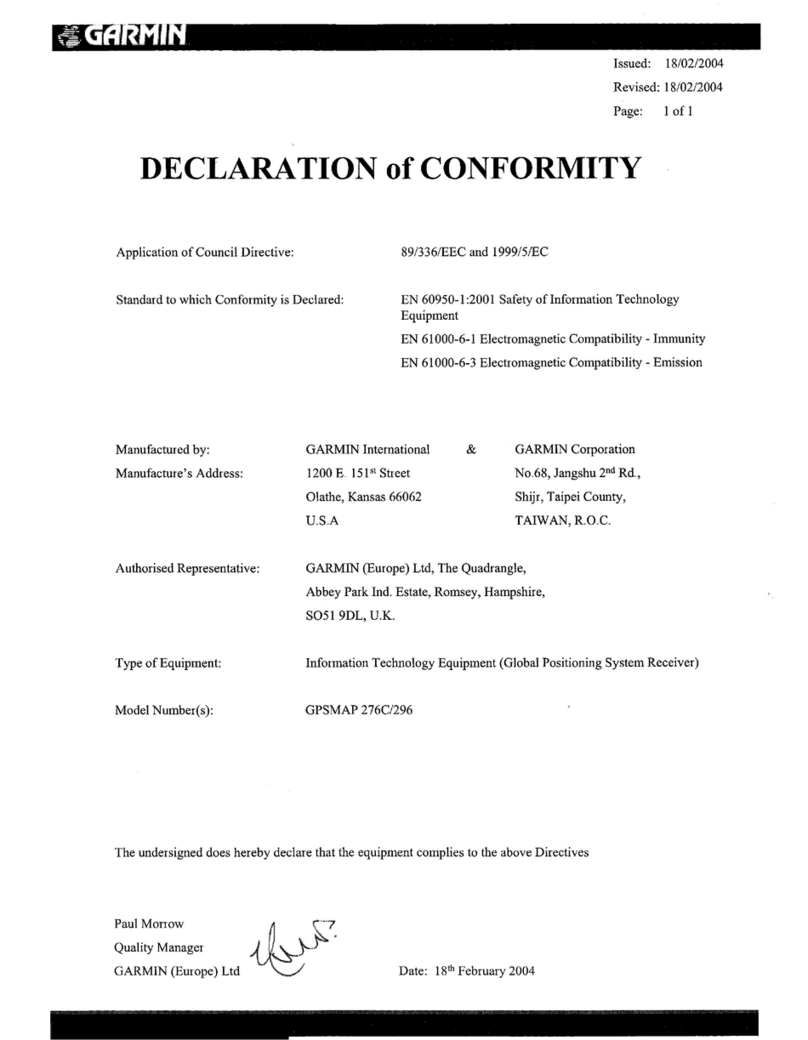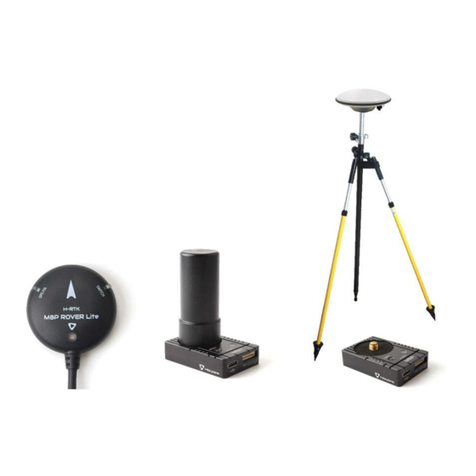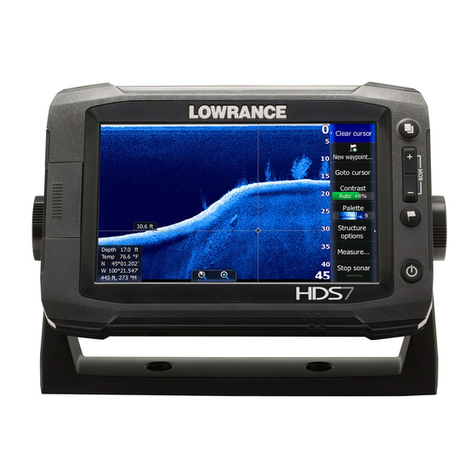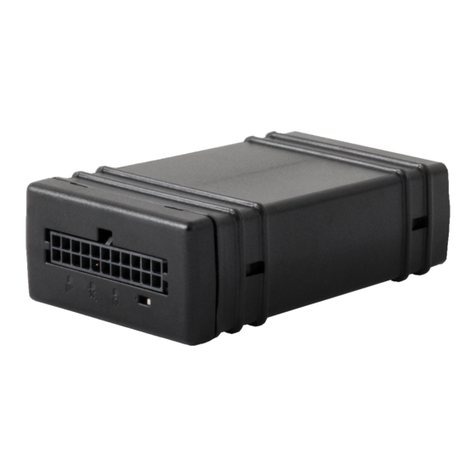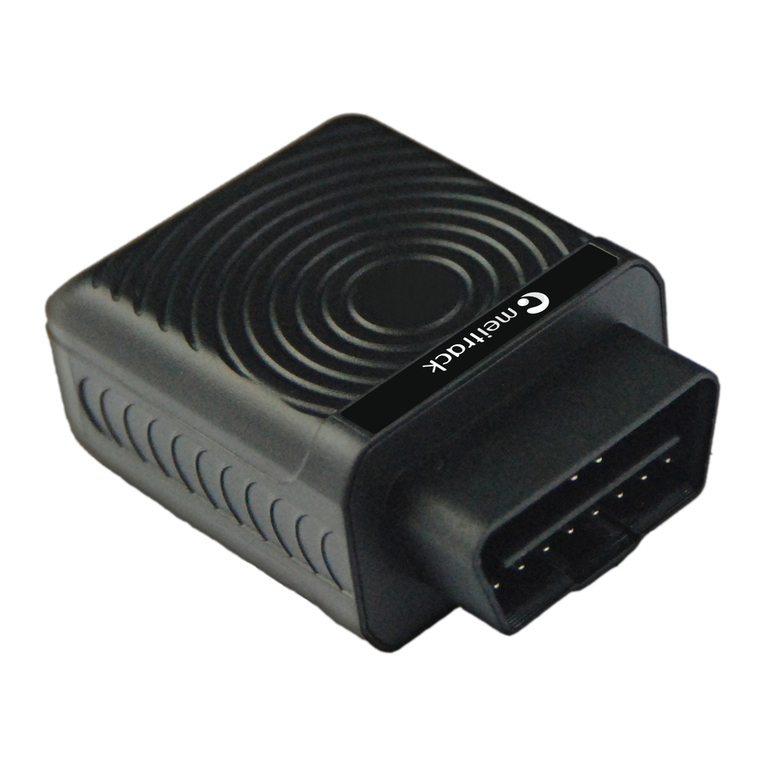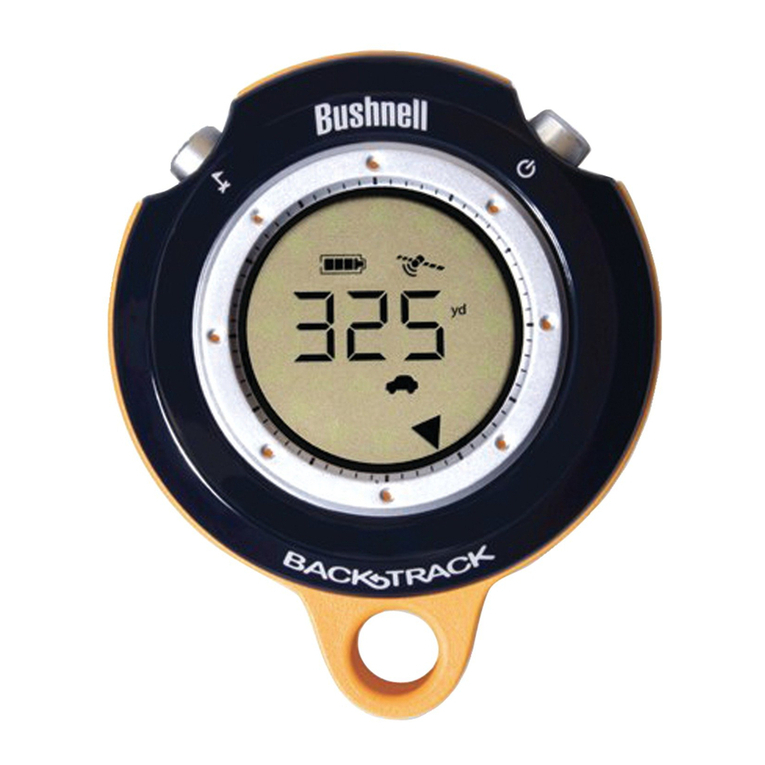Stec ST-901 Owner's manual

S-TEC
P
ilot’s
O
perating Handboo
k

5th Ed. Feb 15, 08 i
S–TEC
List of Effective Pages * Asterisk indicates pages changed, added, or deleted by
current revision.
Record of Revisions Retain this record in front of handbook. Upon receipt of a
revision, insert changes and complete table below.
Revision Number Revision Date Insertion Date/Initials
1st Ed. Mar 14, 00
2nd Ed. Dec 13, 00
3rd Ed. Jan 14, 02
4th Ed. Sep 05, 03
5th Ed. Feb 15, 08

ii 5th Ed. Feb 15, 08
S–TEC
Page Intentionally Blank

5th Ed. Feb 15, 08 iii
S–TEC
Table of Contents
Sec. Pg.
1 Overview...........................................................................................................1–1
1.1 DocumentOrganization....................................................................1–3
1.2 Purpose..............................................................................................1–3
1.3 GeneralControlTheory....................................................................1–3
1.4 BlockDiagram....................................................................................1–4
2 Pre-FlightProcedures...................................................................................2–1
2.1 Pre-FlightTest....................................................................................2–3
3 In-FlightProcedures......................................................................................3–1
3.1 NormalOperating Procedures........................................................3–3
3.1.1 Heading(HDG) Mode........................................................3–3
3.1.2 Global Positioning System Steering (GPSS) Mode.......3–3
3.2 ApproachProcedures.......................................................................3–4
3.2.1 StandardApproach.............................................................3–4
3.2.2 GPSOverlay of VOR/DME-AApproach...........................3–4
3.2.3 GPS-TApproach.................................................................3–4
3.2.4 GPSApproach withHoldingPattern................................3–4
3.2.5 GPS Overlay of VORApproach with ProcedureTurn.....3–4
3.3 EmergencyProcedures....................................................................3–9
4 OperatingParameters..................................................................................4–1
4.1 Ranges.................................................................................................4–3
5 Glossary...........................................................................................................5–1

iv 5th Ed. Feb 15, 08
S–TEC
List of Figures
Fig. Pg.
1–1 HDG /GPSSSelectorSwitch.......................................................................1–5
1–2 ST-901GPSSConverter Block Diagram...................................................1–5
2–1 HDG/GPSSSelector Switch (Pre-Flight)..................................................2–4
3–1 GPS OverlayofVOR/ DME-AApproach......................................................3–5
3–2 GPS-TApproach.............................................................................................3–6
3–3 GPSApproach with Holding Pattern...........................................................3–7
3–4 GPSOverlayof VORApproachwith ProcedureTurn................................3–8
List of Tables
Table Pg.
2–1 Pre-FlightTest...............................................................................................2–3

5th Ed. Feb 15, 08 1-1
S–TEC
SECTION 1
OVERVIEW

1-2 5th Ed. Feb 15, 08
S–TEC
Page Intentionally Blank

5th Ed. Feb 15, 08 1-3
S–TEC
1.1 Document Organization
Section 1 Overview
Section 2 Pre-Flight Procedures
Section 3 In-Flight Procedures
Section 4 Operating Parameters
Section 5 Glossary
1.2 Purpose
This Pilot's Operating Handbook (POH) provides Pre-Flight and In-Flight operating
procedures for the S-TEC ST-901 Global Positioning System Steering (GPSS)
Converter.
Note:
This POH must be carried in the A/C and made available to the pilot at
all times. It can only be used in conjunction with the Federal Aviation
Administration (FAA) approvedAircraft Flight Manual (AFM) orAircraft Flight
Manual Supplement (AFMS). Refer to the applicable AFM or AFMS for
A/C specific information, such as unique ground tests, limitations, and
emergency procedures.
Note:
The GPSS Converter is a tool provided to aircraft owners, that serves to
assist them with cockpit workload management. The ability of the
GPSS Converter to provide optimum assistance and performance is
directly proportional to the pilot's knowledge of its operating procedures.
Therefore, it is highly recommended that the pilot develop a thorough
understanding of the GPSS Converter and its operating procedures in Visual
Meteorological Conditions (VMC), prior to using it under Instrument Flight
Rules (IFR).
1.3 General Control Theory
The GPSS Converter can be used with the following S-TEC autopilots:
System Twenty / Thirty
System Forty / Fifty
System Fifty Five
System Sixty Two
System Sixty Five

1-4 5th Ed. Feb 15, 08
S–TEC
It has the following modes of operation:
HDG Mode - Used to turn onto a Selected Heading and Hold it
GPSS Mode - Used to Laterally Steer along a Course defined by Waypoints,
that have been programmed into the GPS Navigator
Pressing the HDG / GPSS Selector Switch will alternately engage the HDG
mode and GPSS mode. This switch is shown in Fig. 1-1. As indicated, when the
HDG mode is engaged, the HDG lamp is illuminated and the GPSS lamp is
extinguished, but when the GPSS mode is engaged, the GPSS lamp is illuminated
and the HDG lamp is extinguished.
The GPSS Converter is internally configured to be compatible with the particular
AC or DC Heading System installed in the aircraft, be it a Directional Gyro (DG)
or Horizontal Situation Indicator (HSI). The output of the Heading System will be
either an AC or DC Heading Error Signal. When the GPSS Converter's HDG
mode is engaged, the GPSS Converter processes the AC or DC Heading Error
Signal at its input, to produce a proportional DC Heading Error Signal at its
output. This signal is sent to the input of the autopilot's heading error channel.
When the autopilot's HDG mode is also engaged, the autopilot will turn the
aircraft onto the selected heading and hold it.
The GPS Navigator is programmed with a sequence of waypoints, as a means
to define a course. This course is realized at the output of the GPS Navigator in
the form of two digital signals, the Bank Angle Signal and Ground Speed Signal.
When the GPSS Converter's GPSS mode is engaged, the GPSS Converter
processes the Bank Angle Signal and Ground Speed Signal at its input, to
produce a DC Turn Rate Signal at its output. This signal is sent to the input of
the autopilot's heading error channel. When the autopilot's HDG mode is also
engaged, the autopilot will laterally steer the aircraft along the course defined
by the waypoints.
1.4 Block Diagram
The GPSS Converter Block Diagram is shown in Fig. 1-2.

5th Ed. Feb 15, 08 1-5
S–TEC
Fig. 1-2. ST-901 GPSS Converter Block Diagram
Fig. 1-1. HDG / GPSS Selector Switch

1-6 5th Ed. Feb 15, 08
S–TEC
Page Intentionally Blank

5th Ed. Feb 15, 08 2-1
S–TEC
SECTION 2
PRE-FLIGHT PROCEDURES

2-2 5th Ed. Feb 15, 08
S–TEC
Page Intentionally Blank

5th Ed. Feb 15, 08 2-3
S–TEC
ACTION RESPONSE
1. Set Battery Master Switch to ON
position. ------
2. Set Avionics Master Switch to ON
position. ------
3. Set Autopilot Master Switch to ON
position. HDG lamp is illuminated and GPSS
lamp is extinguished on HDG / GPSS
Selector Switch, as an indication that
GPSS Converter’s HDG mode is
engaged. This is shown in Fig. 2-1a.
4. Set Heading Bug under Lubber
Line. ------
5. Engage autopilot’s HDG mode. ------
6. Turn Heading Bug to the left side
of Lubber Line. A/C Control Wheel turns to the left.
7. Turn Heading Bug to the right
side of Lubber Line. A/C Control Wheel turns to the right.
8. Set Heading Bug under Lubber
Line. A/C Control Wheel stops.
9. Program GPS Navigator with a
valid waypoint. ------
2.1 Pre-Flight Test
Prior to takeoff and with engine running, perform the actions shown in Table 2-1.
For each action, verify the corresponding response where applicable.
Table 2-1. Pre-Flight Test (continued on page 2-4)

2-4 5th Ed. Feb 15, 08
S–TEC
ACTION RESPONSE
10. Press HDG / GPSS Selector
Switch. GPSS lamp is illuminated and HDG
lamp is extinguished on HDG / GPSS
Selector Switch, as an indication that
GPSS Converter’s GPSS mode is
engaged. This is shown in Fig. 2-1b.
11. Turn Heading Bug to the left side
and right side of Lubber Line. A/C Control Wheel does not respond.
Note: The GPSS mode cannot be tested since there is no groundspeed.
12. Disconnect autopilot. ------
Table 2-1. Pre-Flight Test (continued from page 2-3)
Fig. 2-1. HDG / GPSS Selector Switch

5th Ed. Feb 15, 08 3-1
S–TEC
SECTION 3
IN-FLIGHT PROCEDURES

3-2 5th Ed. Feb 15, 08
S–TEC
Page Intentionally Blank

5th Ed. Feb 15, 08 3-3
S–TEC
3.1 Normal Operating Procedures
3.1.1 Heading (HDG) Mode
Set the Heading Bug to the desired heading on the compass card (HSI or DG).
Engage the GPSS Converter's HDG mode.
Engage the autopilot's HDG mode.
The autopilot will turn the aircraft onto the selected heading and hold it. The turn
rate will be limited to 90% of a standard rate turn, although for some higher
performance (turboprop) aircraft this is 75%.
A new heading can be subsequently selected by setting the Heading Bug to it.
3.1.2 Global Positioning System Steering (GPSS) Mode
Set the Heading Bug under the Lubber Line.
Engage the GPSS Converter's HDG mode.
Engage the autopilot's HDG mode.
Program the GPS Navigator with a sequence of waypoints, as a means to define
the desired course.
Engage the GPSS Converter's GPSS mode.
The autopilot will begin to laterally steer the aircraft along the course (i.e., track
the course).
The turn rate will be limited to 90% of a standard rate turn, although for some
higher performance (turboprop) aircraft this is 75%.
If it should happen that the GPS Navigator has not been programmed with a
sequence of waypoints upon attempted engagement of the GPSS mode, then
the autopilot will hold the aircraft at wings level, and the GPSS lamp will flash on
the HDG / GPSS Selector Switch to acknowledge this condition.
Engaging any autopilot roll mode other than HDG (i.e., NAV, APR, REV, STB,
LO TRK, HI TRK) will decouple the autopilot from the GPSS mode.
With the GPSS mode engaged, the autopilot will not respond to the Heading
Bug or Course Pointer.
Note:
It is not possible to simultaneously engage the HDG mode and arm the
GPSS mode. Consequently, there does not exist the capability to execute
a dual mode, pilot selectable intercept angle of the course.

3-4 5th Ed. Feb 15, 08
S–TEC
3.2 Approach Procedures
3.2.1 Standard Approach
Set the Heading Bug under the Lubber Line.
Engage the GPSS Converter's HDG mode.
Engage the autopilot's HDG mode.
Program the GPS Navigator with the desired approach.
Engage the GPSS Converter's GPSS mode.
The autopilot will begin tracking to the Initial Approach Fix (IAF).
To execute any required procedure turn or holding pattern, proceed as follows:
1. Engage the GPSS Converter's HDG mode.
2. Lead the aircraft around the procedure turn or holding pattern using the
Heading Bug.
3. Once established on the inbound course, engage the GPSS Converter's
GPSS mode.
4. Complete the approach.
3.2.2 GPS Overlay of VOR / DME-A Approach
Refer to Fig. 3-1.
3.2.3 GPS-T Approach
Refer to Fig. 3-2.
3.2.4 GPS Approach with Holding Pattern
Refer to Fig. 3-3.
3.2.5 GPS Overlay of VOR Approach with Procedure Turn
Refer to Fig. 3-4.

5th Ed. Feb 15, 08 3-5
S–TEC
Fig. 3-1. GPS Overlay of VOR / DME-A Approach
1. a. Set the Heading Bug under the Lubber Line.
b. Engage the GPSS Converter's HDG mode.
c. Engage the autopilot's HDG mode.
d. Program the GPS Navigator with the desired approach.
e. Engage the GPSS Converter's GPSS mode.
f. The autopilot begins tracking to the Initial Approach Fix (IAF).
2. a. The autopilot intercepts the IAF, and then tracks around the arc.
3. a. The autopilot becomes established on the inbound course.
b. At the MissedApproach Point (MAP), disconnect the autopilot for a landing
or go-around, as required.
Table of contents
